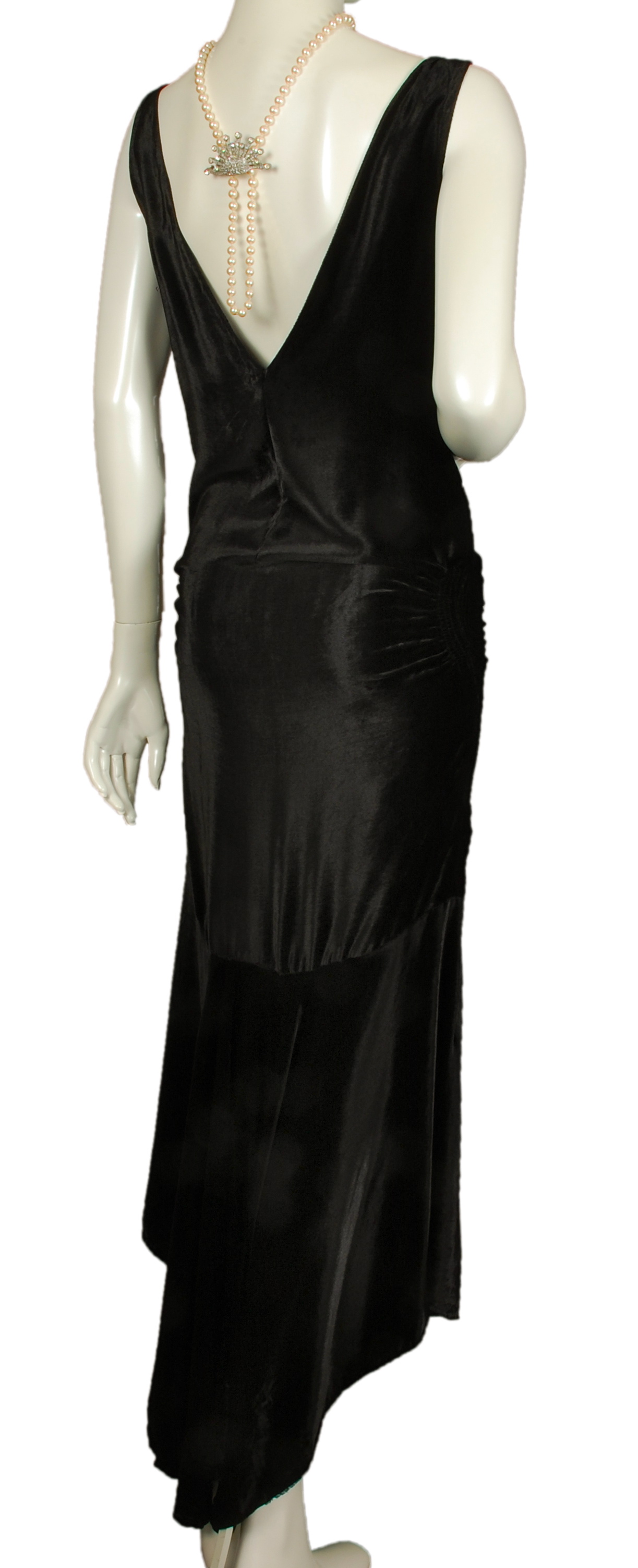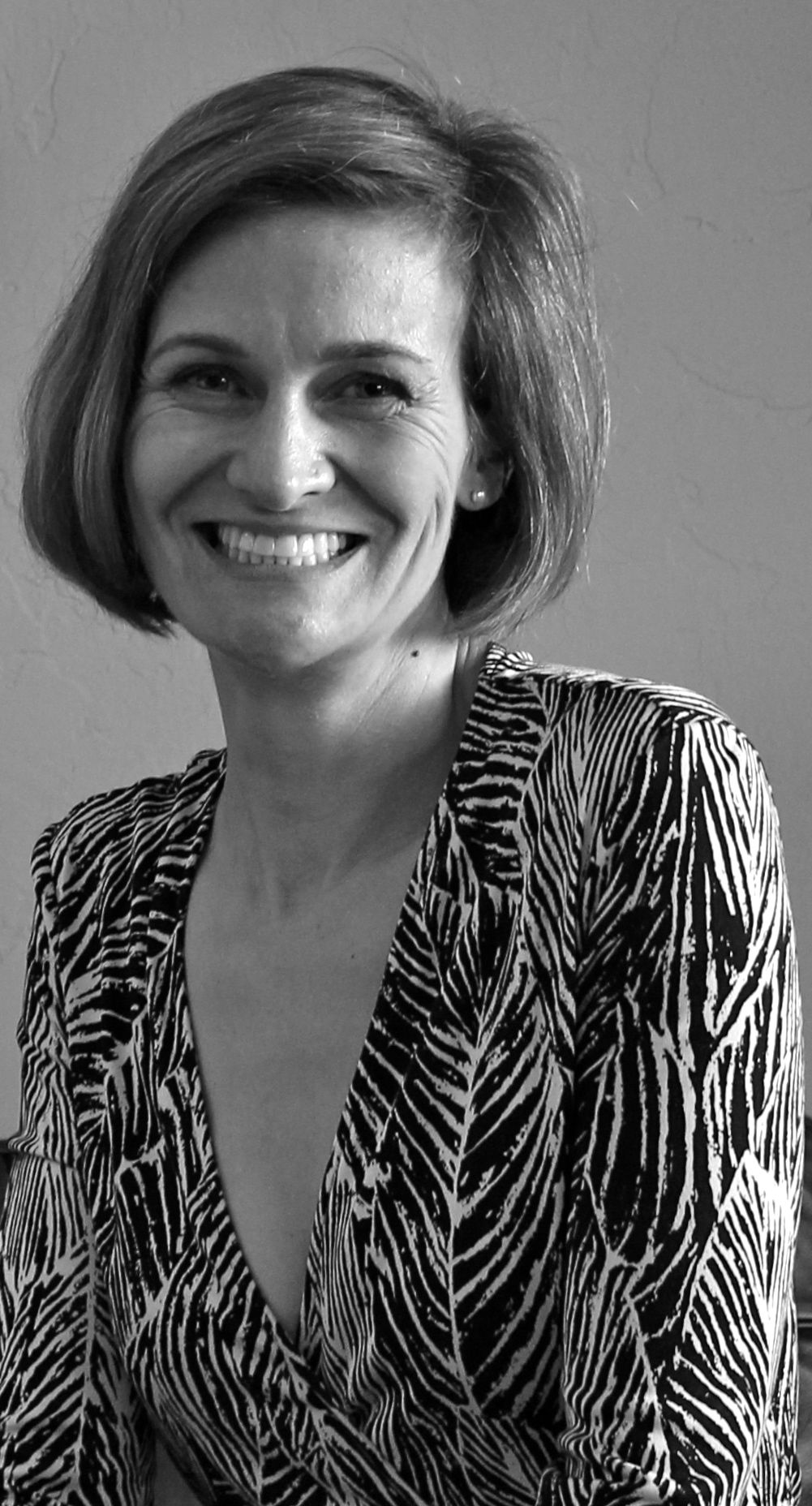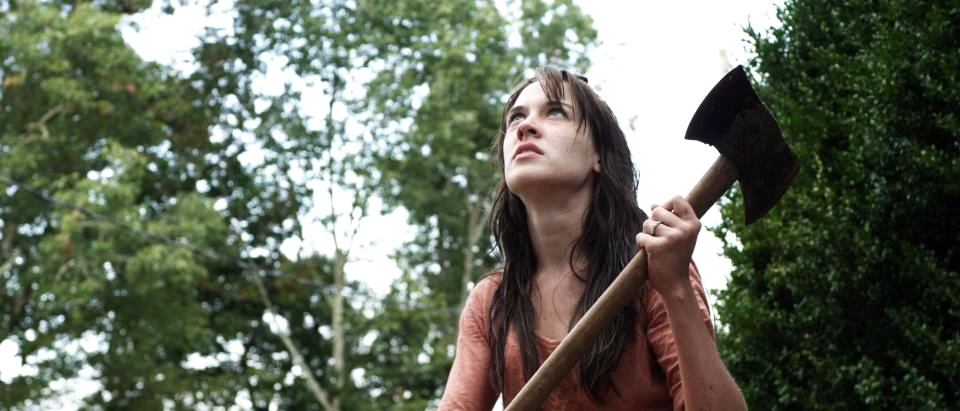3 Story scoops up arts reporting award
Shortly after its launch, 3 Story Magazine scooped up an Arizona Press Club award for arts reporting. Billed as 'the best journalism in Arizona', the awards celebrated magazines and newspapers for their work in 2012.  3 Story's Gillian Drummond won first place for arts reporting in the non-metro category (that means the smaller publications among us) for the following features: Art, Willy Wonka style, Eye Candy and Arizona is his middle name.
3 Story's Gillian Drummond won first place for arts reporting in the non-metro category (that means the smaller publications among us) for the following features: Art, Willy Wonka style, Eye Candy and Arizona is his middle name.
Judge Anne Geggis of South Florida Sun-Sentinel said: “These stories made me want to visit [Tucson] to check out the arts scene.”
Says Gillian: "I'm chuffed that the stories 3 Story is uncovering and the quality of our journalism has been recognized by others in the field. Chuffed means proud, by the way."
Fed by Threads T-shirt giveaway! FREE
3 Story Magazine T-Shirt Giveaway!
Not only did we love writing about Fed by Threads in this issue, we fell a lot in love with their clothes, too.
That's why we're giving away two of their Legalize Love T-shirts, one men's and one women's. All you have to do is go to our feature in this issue and leave a comment. That's it! And you can comment as many times as you like. On May 20th we'll draw from the names and announce the winners via email and Facebook.
Good luck!
What's so great, Gatsby?
Carey Mulligan as Daisy Buchanan in The Great Gatsby. Photo courtesy of Warner Brothers

Photo courtesy of Black Cat Vintage
"The 1920s are my favorite fashion era. The historical influences (Russia/Ballets Russes, the opening of the Far East, the introduction of the automobile in society, Prohibition and its consequences) and vigorous displays of wealth created the most opulent fashion. The details, like the use of real gold thread, massive jewels, imported fabrics fit for kings and queens, were astounding.
"But there was a dark, romantic opium den gypsy-ness to it that appeals to me. As carefree as the era and people were, you'd think the fashion would be more bright and optimistic, but it wasn't. It was more sensual and smoldering. Coincidentally, that contrast is the same reason I love Fitzgerald's book. How ironic that people who can afford to buy anything lack the one thing that really matters... and can't be bought. That same push/pull is present in the clothes, so the book is a really perfect allegory for the time in which it was written."
And we couldn't let Claudine go without asking her to share a couple of her favorite '20s pieces from her store.

Photo courtesy of Black Cat Vintage
"The first piece I love is a late 1920s silk velvet flapper gown. The hip ruching makes it blousey up top, then tight across the hips, and finally it flares out in a mermaid hem at the bottom. Very dramatic. The low back is a nod to the Hays Code, which legislated indecency in movies starting in the '20s. Costumers circumvented restrictions on low cleavage and short hemlines by giving dresses low (or no) backs and figure-skimming silhouettes, not to mention using bias cut satin and velvet, which shows every curve.
"The second is a mid-20s car coat with an attached sash trimmed in monkey fur. It is made of heavyweight lacquered satin, which is impossible to find today, and has the boxy/boyish cut and asymmetry so prevalent in '20s clothes. Of course the best part is the monkey fur, which you couldn't get away with today. But it perfectly illustrates the excess and flamboyance of the times."
Baz buzz and all that jazz
It's not all you need to know about The Great Gatsby, but it's enough to impress your friends at Happy Hour anyway.
* Hip hop was weaved into the soundtrack because it's the jazz of today, says director, producer and screenwriter Baz Luhrmann ('Moulin Rouge'). He wanted to create an energy for audiences that would have been as exciting as jazz was in the 1920s, and hip hop was the obvious choice. Jay-Z is an executive producer of the film.
* The movie's costume designer is Catherine Martin, Baz Luhrmann's wife, who has collaborated with her husband on all of his productions for more than 20 years. The two Australians met after his experimental theatre company hired her to design a production for the Australian Opera. Their first film gig together was Strictly Ballroom.
* Catherine sells homewares in her spare time, with collections of rugs, fabrics and wall coverings for Designer Rugs and Mokum Textiles. Some of her pieces appear in the film and have been used at several Tiffany & Co stores around the world.
* Baz, Catherine and other crew members ensconced themselves in the Ace Hotel in New York City to write and create, because it had views that had not changed much since the 1920s.
*Another collaborator was British musician Bryan Ferry, who re-recorded some traditional jazz tracks for the soundtrack.
Read about Black Cat Vintage in 3 Story's feature. The Great Gatsby opens in cinemas Friday. And if you want a double helping of Mr. Gatsby, check out the Robert Redford and Mia Farrow version of the film May 16 at Cinema La Placita.
Film Fe(a)st
A 3 STORY EXCLUSIVE!
Thank you to the producer and director of The House of Good and Evil for their live Q&A session, and to all our readers who chimed in. Blu de Golyer had tales to tell of the involvement of Tippi Hedren, and his own cameo role. Director David Mun, a UA graduate, shared some titillating stuff, and got all nostalgic for Tucson. You can watch a replay of the conversation by clicking here.
THE FILM FEST
The 22nd Arizona International Film Festival hits Tucson this Friday, and the line-up is bigger and buzzier than ever. With so much to choose from, what's a film buff to do? Below we give you not only our top picks, but the scoop on what the filmmakers will be seeing. Plus: Why Hollywood is turning its back on Arizona. By Gillian Drummond.
3 Story's top 3 picks
1. The House of Good and Evil
The Shining meets Amityville Horror in this psychological thriller about a couple who buy an isolated home in the woods in an effort to save their dying marriage.
Who's behind it: Writer/producer Blu de Golyer, who has 26 screenplays to his name (half as a ghost writer); and director David Mun, a University of Arizona graduate.
Why you should see it: Lots of reasons. It's David's directing debut, and you know how we love to support Tucson talent. Blu and his wife Susan poured their own money into this project. It was shot in Susan's home town of Floyd, Virginia with lots of help and extras support from the locals.
Did you know? Hitchcock protégé Tippi Hedren was supposed to star, but she was called away to promote The Girl, the new movie about Alfred Hitchcock. Two days before they started shooting, Blu and David secured Marietta Marich, star of the 2003 remake of The Texas Chainsaw Massacre.
Blu's film fest pick: "I'm really excited to see Methhead. It has a lot of topical subjects for right now: drugs, sexuality, social acceptance. I also want to see La Camioneta: The Journey of One American School Bus."
2. Taking Charge: The Pauly Cohen Story
This documentary chronicles Pauly Cohen, once lead trumpeter for the likes of Count Basie, Frank Sinatra and Tony Bennett, and now - at the age of 90 - leading his own band.
Who's behind it: Jazz writer and video journalist Bret Primack (see our feature in this week's issue).
Why you should see it: Bret has made a name and a huge worldwide following with his You Tube efforts. He's rightly proud of this, his first feature-length film. We're hoping it's one of many to come.
Did you know? Bret set up Pauly's 90th birthday party and reunion that's shown in the film. Disingenuous? Not a bit, says Bret. He needed an event as a hook, so he created one himself.
Bret's film fest pick: "Indian Dreams. I'm looking forward to checking out this journey across India, featuring lots of original music and some unexpected happenings, as most journeys usually offer."
3. Zoom! - Tucson's Late '50s Rock 'n' Roll Record Label
This documentary which began life as a Masters dissertation, looks at the short but exciting life of a Tucson record label formed in 1959.
Who's behind it: Ethnomusicologist and UA graduate Dan Kruse (pictured). You'll recognize his voice from his part-time job as host of All Things Considered on NPR 89.1 FM.
Why you should see it: It will make you smile, and take you back to an era that's missed in this age of social media. Burt Schneider and Ray Lindstrom, the guys behind Zoom Records, had to travel up to Phoenix to record their bands. When it came to recording studios, the Tucson desert was just that - a desert.
Did you know? Technical problems almost prevented Dan from filming his road trip segment, where Burt and Ray are on the road together, because the crew's wireless mics wouldn't work. "After nearly an hour of fiddling, our DP Bob Demers devised an incredibly ingenious solution on the spot, using a stereo pair of wired mics and snaking the mic cables around the inside of the car and into a tiny audio recorder he happened to have with him. It really saved the day," says Dan.
Dan's film fest pick: "The program of musical shorts on Saturday, April 20. I really enjoy how music can come alive through films of any sort - narrative, music videos, documentaries. And I love the idea of being able to watch a whole series of thematically-connected short films at one sitting."
Sneak preview here.
So long Quentin, Johnny and Seth: why Hollywood is turning its back on us
Filmmakers may be flocking to Tucson for the 22nd Arizona International Film Festival, but ordinarily they go in another direction.
Quentin Tarantino said no to us for Django Unchained. Disney went in another direction for The Lone Ranger, out this summer. We lost out on the chance of being involved with Seth MacFarlane's new Western, A Million Ways to Die in the West.
 At the same time, film industry technicians are going out of state for work, and film graduates from the University of Arizona are packing their bags for Los Angeles almost as soon as they've matriculated. The reason, say local film industry experts, is a lack of incentives and tax breaks, compared to other states.
At the same time, film industry technicians are going out of state for work, and film graduates from the University of Arizona are packing their bags for Los Angeles almost as soon as they've matriculated. The reason, say local film industry experts, is a lack of incentives and tax breaks, compared to other states.
"Because Arizona could not offer competitive incentives, they stopped scouting," says Shelli Hall, director of the Tucson Film Office, of the ones that have gotten away from us lately. "We have lost out on many many more. Almost anything that went to New Mexico and Utah these last few years, we would have been in the running for if we had had incentives."
Disney did end up filming for a few days in Monument Valley but, says Shelli, the film crew stayed in Utah to take advantage of their incentives.
The filming of part of The Hangover Part III in Nogales, Arizona last Fall is proof of just what an impact luring movie producers has on the local economy. The film crew's visit to Nogales resulted in $2 million in direct spending, 1,000 hotel room nights and the hiring of five locals to help with film production.
Shelli and others were behind SB1242, a bill that would have created an income tax credit for companies producing films here. Just weeks ago they shelved their efforts, blaming lack of support from the State House and Senate.
"Despite the fact that we have prevailed in every committee and with every floor vote, lack of support from House and Senate leadership has created, and continues to create, an insurmountable obstacle. Given the current political climate, passing SB1242 will be impossible," said Shelli and Mike Kucharo in a statement. Until then, says Shelli, she and others will be exploring other ways to boost an industry that was once a big economic driver here.
Among the arguments against the bill were the fear that other industries would start knocking on Arizona's door asking for similar benefits. But in a state that gave birth to Old Tucson Studios, and featured in movies ranging from Rio Bravo to Wild Wild West, Tin Cup to Three Amigos, Psycho to Thelma & Louise, the frustration among those in the film industry is palpable.
Says Tucson-based filmmaker Scott Barker, hard at work on his latest project, The Z: "There's no question that Hollywood has hopscotched Arizona for New Mexico on projects like 3:10 to Yuma because they can save a chunk of their budget on rebates."
* Don't miss our big film fest giveaway! Tickets to the Arizona International Film Festival's opening night could be yours.
![IMG_2427[1]](https://3storymagazine.com/wp-content/uploads/2013/10/IMG_24271-150x150.jpg)
![IMG_2432[1]](https://3storymagazine.com/wp-content/uploads/2013/10/IMG_24321-150x150.jpg)
![IMG_2435[1]](https://3storymagazine.com/wp-content/uploads/2013/10/IMG_24351-150x150.jpg)
![IMG_2435[1]](https://3storymagazine.com/wp-content/uploads/2013/10/IMG_243511-150x150.jpg)
![IMG_2443[1]](https://3storymagazine.com/wp-content/uploads/2013/10/IMG_24431-150x150.jpg)
![IMG_2444[1]](https://3storymagazine.com/wp-content/uploads/2013/10/IMG_24441-150x150.jpg)
![IMG_2449[1]](https://3storymagazine.com/wp-content/uploads/2013/10/IMG_24491-150x150.jpg)
![IMG_2455[1]](https://3storymagazine.com/wp-content/uploads/2013/10/IMG_24551-150x150.jpg)
![IMG_2459[1]](https://3storymagazine.com/wp-content/uploads/2013/10/IMG_24591-150x150.jpg)
![IMG_2465[1]](https://3storymagazine.com/wp-content/uploads/2013/10/IMG_24651-150x150.jpg)
![IMG_2472[1]](https://3storymagazine.com/wp-content/uploads/2013/10/IMG_24721-150x150.jpg)
![IMG_2471[1]](https://3storymagazine.com/wp-content/uploads/2013/10/IMG_24711-150x150.jpg)
![IMG_2481[1]](https://3storymagazine.com/wp-content/uploads/2013/10/IMG_24811-150x150.jpg)
![IMG_2491[1]](https://3storymagazine.com/wp-content/uploads/2013/10/IMG_24911-150x150.jpg)
![IMG_2498[1]](https://3storymagazine.com/wp-content/uploads/2013/10/IMG_24981-150x150.jpg)
![IMG_2500[1]](https://3storymagazine.com/wp-content/uploads/2013/10/IMG_25001-150x150.jpg)
![IMG_2502[1]](https://3storymagazine.com/wp-content/uploads/2013/10/IMG_25021-150x150.jpg)
![IMG_2505[1]](https://3storymagazine.com/wp-content/uploads/2013/10/IMG_25051-150x150.jpg)
![IMG_2512[1]](https://3storymagazine.com/wp-content/uploads/2013/10/IMG_25121-150x150.jpg)
![IMG_2525[1]](https://3storymagazine.com/wp-content/uploads/2013/10/IMG_25251-150x150.jpg)
![IMG_2529[1]](https://3storymagazine.com/wp-content/uploads/2013/10/IMG_25291-150x150.jpg)
![IMG_2527[1]](https://3storymagazine.com/wp-content/uploads/2013/10/IMG_25271-150x150.jpg)
![IMG_2531[1]](https://3storymagazine.com/wp-content/uploads/2013/10/IMG_25311-150x150.jpg)
![IMG_2535[1]](https://3storymagazine.com/wp-content/uploads/2013/10/IMG_25351-150x150.jpg)
![IMG_2536[1]](https://3storymagazine.com/wp-content/uploads/2013/10/IMG_25361-150x150.jpg)
![IMG_2538[1]](https://3storymagazine.com/wp-content/uploads/2013/10/IMG_25381-150x150.jpg)
![IMG_2539[1]](https://3storymagazine.com/wp-content/uploads/2013/10/IMG_25391-150x150.jpg)
![IMG_2542[1]](https://3storymagazine.com/wp-content/uploads/2013/10/IMG_25421-150x150.jpg)
![IMG_2544[1]](https://3storymagazine.com/wp-content/uploads/2013/10/IMG_25441-150x150.jpg)
![IMG_2545[1]](https://3storymagazine.com/wp-content/uploads/2013/10/IMG_25451-150x150.jpg)
![IMG_2547[1]](https://3storymagazine.com/wp-content/uploads/2013/10/IMG_25471-150x150.jpg)
![IMG_2551[1]](https://3storymagazine.com/wp-content/uploads/2013/10/IMG_25511-150x150.jpg)
![IMG_2554[1]](https://3storymagazine.com/wp-content/uploads/2013/10/IMG_25541-150x150.jpg)
![IMG_2556[1]](https://3storymagazine.com/wp-content/uploads/2013/10/IMG_25561-150x150.jpg)
![IMG_2562[1]](https://3storymagazine.com/wp-content/uploads/2013/10/IMG_25621-150x150.jpg)
![IMG_2565[1]](https://3storymagazine.com/wp-content/uploads/2013/10/IMG_25651-150x150.jpg)
![IMG_2570[1]](https://3storymagazine.com/wp-content/uploads/2013/10/IMG_25701-150x150.jpg)
![IMG_2573[1]](https://3storymagazine.com/wp-content/uploads/2013/10/IMG_25731-150x150.jpg)
![IMG_2575[1]](https://3storymagazine.com/wp-content/uploads/2013/10/IMG_25751-150x150.jpg)
![IMG_2580[1]](https://3storymagazine.com/wp-content/uploads/2013/10/IMG_25801-150x150.jpg)
![IMG_2591[1]](https://3storymagazine.com/wp-content/uploads/2013/10/IMG_25911-150x150.jpg)
![IMG_2592[1]](https://3storymagazine.com/wp-content/uploads/2013/10/IMG_25921-150x150.jpg)
![IMG_2596[1]](https://3storymagazine.com/wp-content/uploads/2013/10/IMG_25961-150x150.jpg)
![IMG_2602[1]](https://3storymagazine.com/wp-content/uploads/2013/10/IMG_26021-150x150.jpg)
![IMG_2606[1]](https://3storymagazine.com/wp-content/uploads/2013/10/IMG_26061-150x150.jpg)
![IMG_2607[1]](https://3storymagazine.com/wp-content/uploads/2013/10/IMG_26071-150x150.jpg)
![IMG_2608[1]](https://3storymagazine.com/wp-content/uploads/2013/10/IMG_26081-150x150.jpg)
![IMG_2610[1]](https://3storymagazine.com/wp-content/uploads/2013/10/IMG_26101-150x150.jpg)
![IMG_2615[1]](https://3storymagazine.com/wp-content/uploads/2013/10/IMG_26151-150x150.jpg)
![IMG_2618[1]](https://3storymagazine.com/wp-content/uploads/2013/10/IMG_26181-150x150.jpg)
![IMG_2623[1]](https://3storymagazine.com/wp-content/uploads/2013/10/IMG_26231-150x150.jpg)
![IMG_2620[1]](https://3storymagazine.com/wp-content/uploads/2013/10/IMG_26201-150x150.jpg)
![IMG_2626[1]](https://3storymagazine.com/wp-content/uploads/2013/10/IMG_26261-150x150.jpg)
![IMG_2631[1]](https://3storymagazine.com/wp-content/uploads/2013/10/IMG_26311-150x150.jpg)
![IMG_2633[1]](https://3storymagazine.com/wp-content/uploads/2013/10/IMG_26331-150x150.jpg)
![IMG_2636[1]](https://3storymagazine.com/wp-content/uploads/2013/10/IMG_26361-150x150.jpg)
![IMG_2638[1]](https://3storymagazine.com/wp-content/uploads/2013/10/IMG_26381-150x150.jpg)
![IMG_2639[1]](https://3storymagazine.com/wp-content/uploads/2013/10/IMG_26391-150x150.jpg)
![IMG_2641[1]](https://3storymagazine.com/wp-content/uploads/2013/10/IMG_26411-150x150.jpg)
![IMG_2643[1]](https://3storymagazine.com/wp-content/uploads/2013/10/IMG_26431-150x150.jpg)
![IMG_2650[1]](https://3storymagazine.com/wp-content/uploads/2013/10/IMG_26501-150x150.jpg)
![IMG_2651[1]](https://3storymagazine.com/wp-content/uploads/2013/10/IMG_26511-150x150.jpg)
![IMG_2655[1]](https://3storymagazine.com/wp-content/uploads/2013/10/IMG_26551-150x150.jpg)
![IMG_2656[1]](https://3storymagazine.com/wp-content/uploads/2013/10/IMG_26561-150x150.jpg)

















